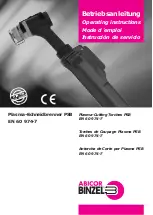
Connecting the Convergence Network
35
Installation and Maintenance Instructions
Federal Signal www.fedsig.com
Connecting the Siren to the Battery
This section has instructions for making the power connections from the
SmartSiren
®
to the battery. Required are an installer-supplied in-line fuse and wiring
of an amperage capacity sufficient to handle the total vehicle electrical loads.
EXPLOSION HAZARD: To avoid a battery explosion, always disconnect the
negative battery cable first and reconnect it last. Avoid causing a spark
when connecting near or to the battery. The gases produced by a battery
can cause a battery explosion that could result in vehicle damage and
serious injury.
HIGH CURRENT ARCING: Do not connect this system to the vehicle battery
until ALL other electrical connections are made and you have verified that
no shorts exist. High current conductors can cause hazardous sparks or
burning wire, resulting in electrical fires.
Preparing to Connect the Power Leads
Before connecting the amplifier/relay module to the battery, take these preparatory
steps to ensure that your final installation goes smoothly:
1. Check all connections and wiring to ensure that they are correct and secure.
2. Ensure that there are no loose strands or other bare wires that may cause a
short circuit. Protect all wires from any sharp edges that could eventually cut
through the insulation.
3. Verify that are other electrical connections are completed and that no shorts
exit.
4. Use an ohmmeter to verify that a short circuit does not exist between the
positive (+) and negative (–) battery cable leads. Also, there must be no short
circuits between the positive wires and the vehicle chassis.
Connecting the Power Leads to the Vehicle Battery
The installer-supplied red (positive) and black (negative ground) power leads from
the siren amplifier/relay module to the vehicle battery should be as short and direct
as possible. See Figure 16 on page 34.
1. Route the red lead and black lead from the siren to the battery.
2. Crimp a ring terminal on the red lead and connect it through an in-line fuse to
the positive (+12 V) battery terminal. The fuse must be of an amperage capacity
sufficient to handle the total vehicle electrical loads.
3. Crimp a ring terminal on the black lead and connect it to the negative (–NEG)
battery terminal.
















































